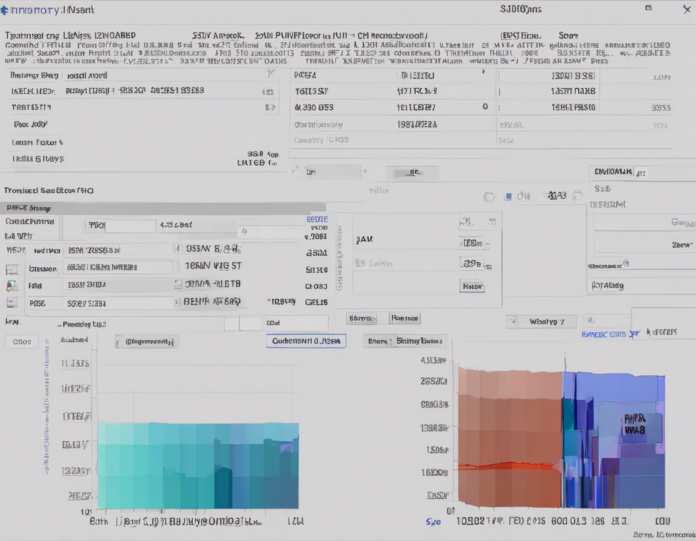Have you ever encountered the term “PALWorld Memory Leak” while working on software development projects or troubleshooting performance issues? Understanding what a PALWorld Memory Leak is and how it can impact your system’s performance is crucial for software developers, system administrators, and anyone working with computer systems. In this comprehensive guide, we will delve into the concept of PALWorld Memory Leak, explore its implications, and discuss strategies to identify and resolve memory leaks effectively.
What is PALWorld Memory Leak?
PAL stands for Performance Analysis of Logs Tool, a Windows command-line utility that analyzes performance monitor logs and provides system performance information. When we refer to a PALWorld Memory Leak, we are specifically talking about memory leaks that are detected and analyzed using the PAL tool. A memory leak occurs when a program fails to release memory that it has allocated, leading to a gradual increase in memory consumption over time. This can eventually result in performance degradation, system instability, or even system crashes.
How does PALWorld Detect Memory Leaks?
PAL analyzes performance monitor logs to identify counter values that are indicative of memory leaks. By monitoring metrics such as available memory, committed memory, paged pool, and non-paged pool, PAL can detect abnormal memory consumption patterns that suggest a memory leak. When these patterns are identified, PAL generates reports and alerts to notify system administrators or developers about potential memory leaks in the system.
Common Indicators of PALWorld Memory Leaks:
- Gradual increase in memory consumption over time
- Unexplained spikes in memory usage
- Persistent high memory utilization
- Frequent out-of-memory errors
Impact of PALWorld Memory Leaks:
Memory leaks can have serious implications for system performance and stability. Some of the key impacts of PALWorld Memory Leaks include:
- Reduced system performance: As memory continues to be consumed unnecessarily, available resources for running applications decrease, leading to sluggish performance.
- System crashes: In severe cases, memory leaks can exhaust all available memory, causing the system to become unresponsive or crash.
- Resource contention: Memory leaks can exacerbate resource contention issues, affecting the performance of other system components and applications.
- Difficulty in diagnosing: Identifying the source of memory leaks can be challenging, requiring advanced troubleshooting and profiling techniques.
Identifying and Resolving PALWorld Memory Leaks:
Detecting and resolving memory leaks, including PALWorld Memory Leaks, requires a systematic approach and the use of appropriate tools and techniques. Here are some steps you can take to identify and resolve PALWorld Memory Leaks effectively:
1. Monitor System Performance:
Regularly monitor system performance metrics using tools like Performance Monitor or PAL to identify abnormal memory consumption patterns that may indicate memory leaks.
2. Use Memory Profiling Tools:
Utilize memory profiling tools like DebugDiag, WinDbg, or Visual Studio Memory Profiler to capture memory dumps and analyze memory usage patterns in your application.
3. Review Code for Memory Management Issues:
Inspect your codebase for common memory management issues such as unreleased memory or circular references that can lead to memory leaks.
4. Implement Best Practices:
Follow best practices for memory management, such as using auto pointers, smart pointers, and garbage collection, to minimize the risk of memory leaks in your code.
5. Perform Load Testing:
Conduct load testing and stress testing to simulate real-world usage scenarios and identify memory leaks under different workloads.
6. Collaborate with Developers and System Administrators:
Work closely with developers and system administrators to troubleshoot and address memory leaks collaboratively, leveraging their expertise and domain knowledge.
FAQs on PALWorld Memory Leaks:
1. What causes PALWorld Memory Leaks?
PALWorld Memory Leaks are typically caused by programming errors or inefficiencies that result in memory not being properly released or deallocated by the application.
2. Can memory leaks lead to security vulnerabilities?
Yes, memory leaks can potentially lead to security vulnerabilities if sensitive information remains in memory and is accessible to unauthorized parties.
3. Are there automated tools to detect PALWorld Memory Leaks?
Tools like PAL and DebugDiag can help automate the detection and analysis of PALWorld Memory Leaks by monitoring system performance and memory usage.
4. How can I prioritize memory leak fixes in my application?
Prioritize memory leak fixes based on the severity of the impact on system performance, stability, and user experience. Address critical memory leaks first to prevent system crashes or outages.
5. Is it possible to prevent PALWorld Memory Leaks proactively?
By following best practices for memory management, conducting regular code reviews, and using automated testing tools, you can proactively mitigate the risk of PALWorld Memory Leaks in your applications.
In conclusion, understanding and addressing PALWorld Memory Leaks is essential for maintaining the performance, stability, and reliability of your software systems. By adopting proactive monitoring, debugging, and collaboration practices, you can effectively identify and resolve memory leaks, ensuring optimal system performance and user satisfaction.
